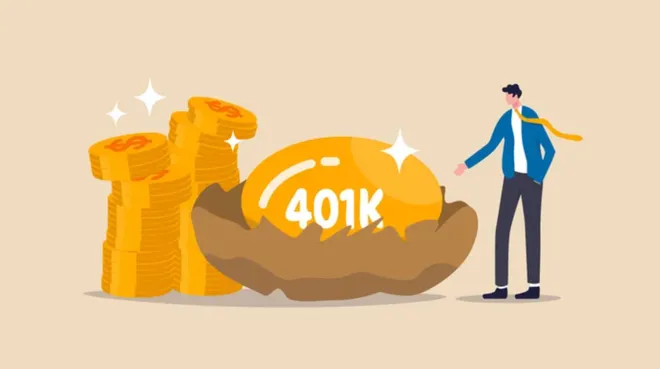Americans will be able to sock away more in their workplace retirement plans, before taxes, in 2025.
The IRS said on Friday it increased the annual employee deferral limit to $23,500, from $23,000 in 2024, for workplace plans, including 401(k)s, 403(b)s, governmental 457 plans and the federal government’s Thrift Savings Plan. Catch-up contributions for those participants aged 50 and up will remain at $7,500, which means their total contribution for 2025 is capped at $31,000.
In 2023, only 14% of employees maxed out their workplans, according to Vanguard’s How America Saves report. In plans offering catch-up contributions, 15% of participants 50 or older contributed more, it said.
Starting in 2025, employees aged 60 to 63 years old who participate in one of those work plans have a higher catch-up contribution limit. That cap is $11,250, instead of $7,500.
“Once you hit age 64, you are no longer eligible for a super catch-up contribution and are limited to the regular catch-up contribution amount,” said certified public accountant Richard Pon in San Francisco, California.
But remember, “right now, technically, there is no law that says that employers must offer a super catch-up contribution so I believe an employer’s retirement plan must be amended to specifically allow for a super catch-up contribution.”
What are the IRA limits in 2025?
The limit on annual contributions to an IRA remains $7,000. The IRA catch‑up contribution limit for individuals aged 50 also stayed at $1,000 for 2025, after a cost-of-living adjustment, the IRS said.
Did income ranges change for contributions to traditional and Roth IRAs?
Yes, the income ranges to determne eligibility to make deductible contributions to a traditional IRA, to contribute to Roth IRAs and to claim the Saver’s Credit all increased for 2025, the IRS said.
Here are the phase‑out ranges for 2025:
- For single taxpayers covered by a workplace retirement plan, the phase-out range rose to between $79,000 and $89,000, from $77,000 to $87,000.
- For married couples filing jointly, if the spouse making the IRA contribution is covered by a workplace retirement plan, the phase-out range increased to $126,000 to $146,000, from $123,000 to $143,000.
- For an IRA contributor not covered by a workplace retirement plan and married to someone who is covered, the phase-out range is $236,000 to $246,000, up from $230,000 and $240,000.
- For a married individual filing a separate return who is covered by a workplace retirement plan, the phase-out range is not subject to an annual cost-of-living adjustment and remains between $0 and $10,000.
- The income phase-out range for taxpayers making contributions to a Roth IRA is $150,000 to $165,000 for singles and heads of household, up from $146,000 to $161,000. For married couples filing jointly, the income phase-out range rose to between $236,000 and $246,000, from $230,000 to $240,000. The phase-out range for a married individual filing a separate return who makes contributions to a Roth IRA isn’t subject to an annual cost-of-living adjustment and remains between $0 and $10,000.
- The income limit for the Saver’s Credit (also known as the Retirement Savings Contributions Credit) for low- and moderate-income workers is $79,000 for married couples filing jointly, up from $76,500; $59,250 for heads of household, up from $57,375; and $39,500 for singles and married individuals filing separately, up from $38,250.

